Storing Number Two Under The Bed


Stroll through any mall in America and you’ll find entire stores dedicated to health and beauty. From vitamins to body wash and makeup, there are countless products that claim to make it easy to look and feel your best.
Whether you like to try everything on the market, or have a quick morning routine that involves little more than brushing your teeth and hair, you’re far better off than the men and women of yesteryear. Check out these hygiene practices of the past that’ll make you grateful that you live in today’s modern world…
Wiping The King’s Butt
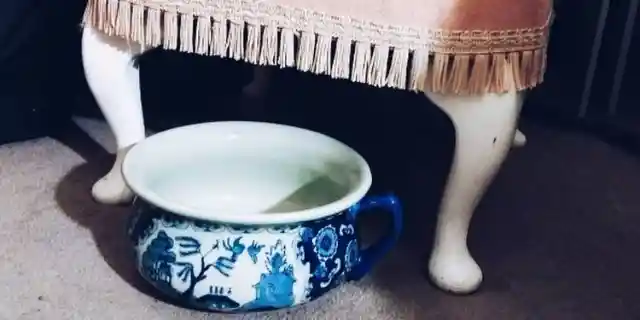
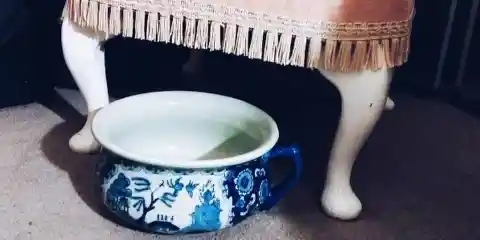
All it takes is 30 seconds in a port-a-potty at an outdoor concert to make you appreciate the modern convenience of indoor toilets. Simply push a lever and you can flush away waste into the great unknown, never to be seen (or smelled) again.
Before this modern convenience, many people kept pots under their beds for those midnight urges, and they would store the waste until the next morning. Even worse? In some places, people emptied their full bedpans out the window and onto the street below.
Pulling Out Teeth With Cavities
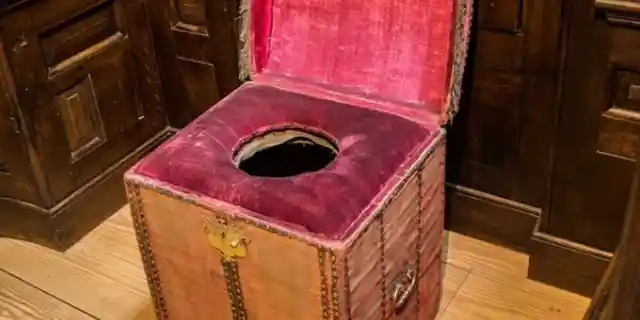
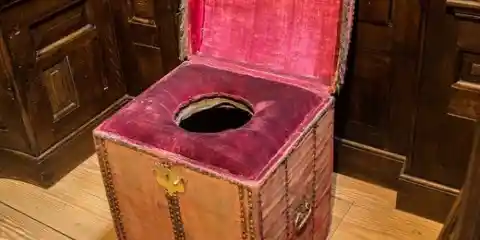
Your coworkers may give you a hard time for “kissing butt” with your managers, but at least you’re not wiping their rear instead. In ancient times, the Groom of the King’s Close Stool was responsible for carrying around a portable toilet and helping the king clean up anytime he had to go. Believe it or not, the position was only held by a trusted advisor. After all, you wouldn’t trust just anyone to get so up close and personal, would you?
Does the thought of sitting in the dentist’s chair give you anxiety? It could be much worse. Before modern dentistry, you’d have to take that toothache to the local barber, who would likely pull it out completely. There wouldn’t be any numbing medicine to ease the pain, either. Now your dental cleaning and checkup doesn’t sound nearly so bad!
Leaves For Toilet Paper
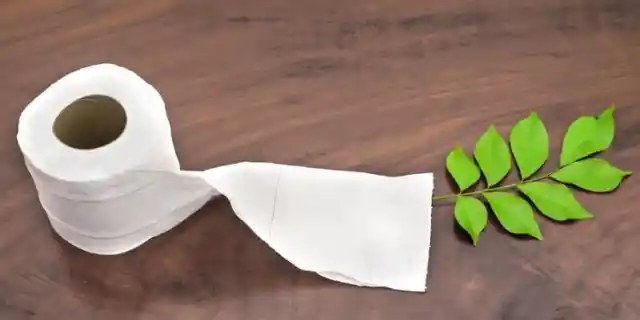
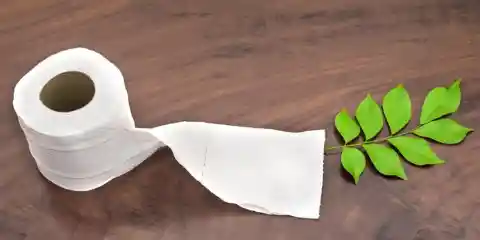
If you’re someone who loves the little indulgence of extra-soft toilet paper, this one might make you cringe. Peasants who couldn’t afford toilet paper often used leaves to get the job done instead. It’s hard to imagine that this was comfortable or even very effective, so don’t forget to pack a roll or two next time you go camping.
Not Changing Dirty Clothes


This nasty little habit wasn’t only practiced by the peasants. Even King James VI of Scotland went months without changing his outfit. While Princess Kate Middleton’s clothes are the subject of a news article each time she appears in public, princesses in medieval times would go months wearing the same dress. Most people only owned four outfits, changing at the start of each season. Remember that the next time you’re tempted to stand in your closet and wail, “I’ve got nothing to wear!”
Wigs Crawling With Lice
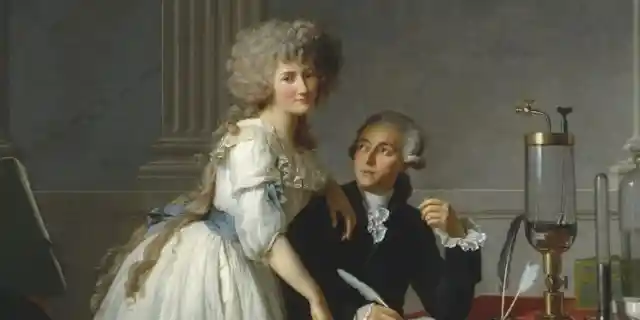
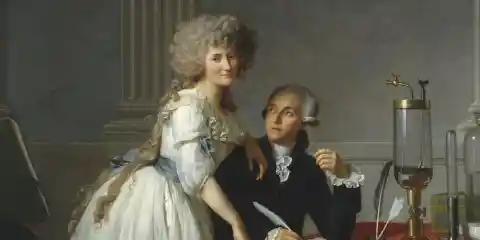
You know the wigs you’ve seen in those stately portraits from the early 1500s and on into the 1800s? Well, there’s one little detail those portrait artists left out: the lice. The majestic wigs were often crawling with hundreds of lice and nits. Could you sit still long enough to have your portrait painted knowing you were covered in itchy insects?
Urine As Face Wash
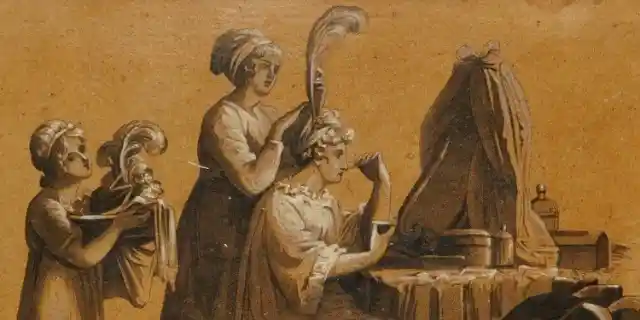

The models in commercials for face wash always look so happy and clean. They probably wouldn’t be quite so eager to splash their faces if we still used the face wash of days gone by: urine. Scientists of the time believed that urine was a highly effective antiseptic, and noble women washed their skin with it almost daily.
Sulfur For Freckles
Did your mom ever encourage you to take pride in your freckles, perhaps reminding you that “a face without freckles is like a sky without stars”? Mothers of ancient history may not have been so encouraging. Freckles were considered an unattractive blemish, and many women rubbed sulfur into their skin every day in an effort to fade the unwanted facial feature.


Chicken Droppings For Baldness
For those not so eager to plop a lice-infested wig on their scalp, medicine offered a cure for baldness. A mixture of potassium and chicken droppings was frequently rubbed into the bald spots in an attempt to encourage hair growth. While modern science still doesn’t seem to have found a perfect cure for baldness, at least men are no longer sent home with a bag full of chicken droppings.
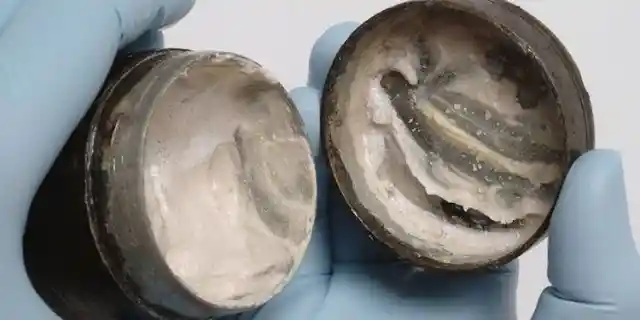
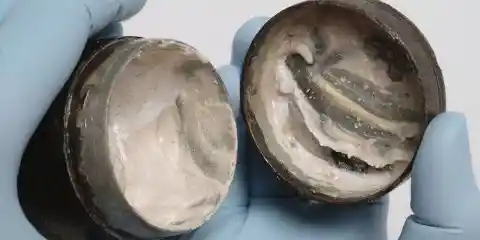
Lead-Based Facial Creams
Where you may spend some time in the sun chasing that perfect golden glow, women in the Elizabethan era were always after a creamy white complexion. Many used a Ceruse lead powder to mask their natural pigmentation. Queen Elizabeth I may have been the worst case of all. Instead of washing off the poisonous cream at the end of the day, she simply added a new layer to it in the morning. It’s believed the lead eventually gave her skin a grayish hue, but of course she continued to mask it with more Ceruse lead powder.


Flowers To Mask Body Odor
By this point, you’re probably starting to wonder if all these health practices made for some pretty terrible body odor. Well, they did. Of course, everyone smelled equally terrible, so it wasn’t as offensive as it would be today. Women did make some effort to mask their stench with the help of flowers, but it’s hard to imagine that was quite as effective as modern-day deodorant.
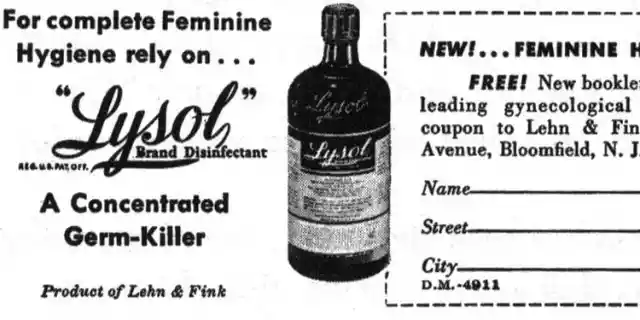
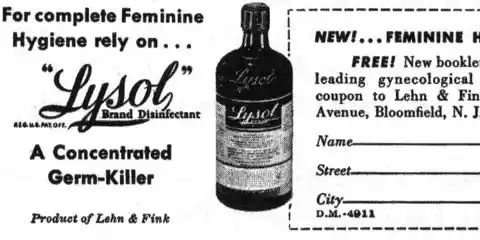
Lysol On Lady Parts
Believe it or not, this shocking practice was in place right up until the birth control pill was introduced in 1960. Women used Lysol to both clean their lady parts and prevent pregnancy. It should come as no surprise that this wasn’t an effective birth control method. One study from as early as 1933 found that almost half of women who relied on this method ended up with a little bundle of unexpected joy.
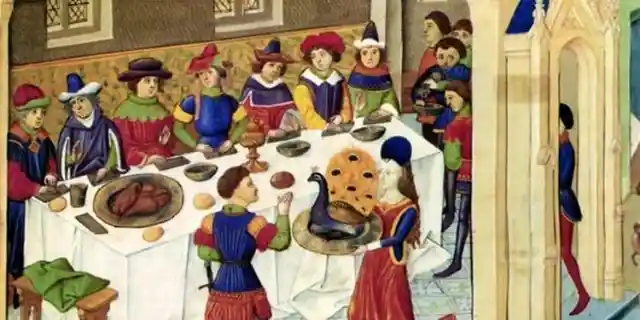

Fingers, Not Forks
Many of the things we consider basic necessities were major luxuries in centuries past. For example, impoverished people in history didn’t own utensils and typically ate with their hands instead. They also lacked our modern understanding of germs, so you can imagine how quickly diseases spread through this dining practice.
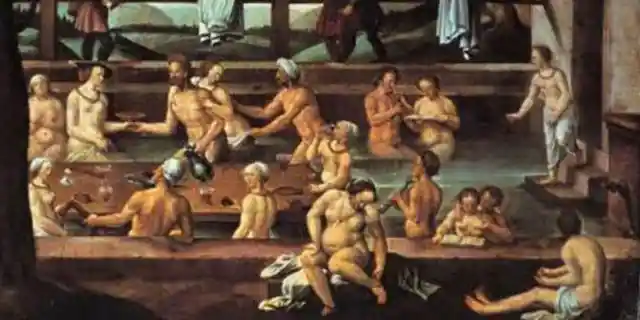

Sharing Common Bathwater
If you’re someone who prefers a shower to a bath so you don’t have to sit in dirty water, this is sure to make you shudder. Rather than washing off sweat and grime in the privacy of their own home, people in the past often gathered in a common bathing area, sharing bathwater with hundreds of other people. But on the bright side, at least you’d have a friend nearby to help you reach that hard-to-get spot in the center of your back.


Tudor House Toilets
Do you absolutely hate cleaning the bathroom? Perhaps you would have preferred to live in bygone eras, when people simply didn’t bother to clean the toilets. Of course, this made them a filthy source of often-deadly diseases, so it admittedly had its cons. On second thought, hitting the toilet bowl with some cleaner and a brush doesn’t sound so bad.
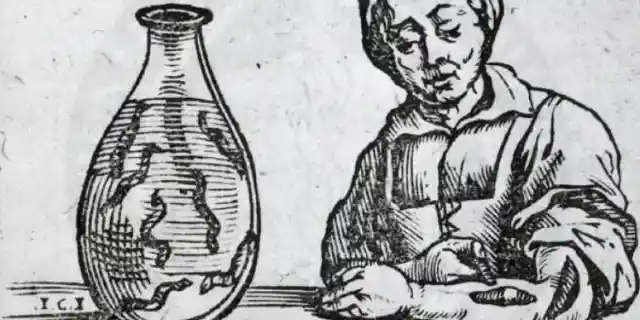
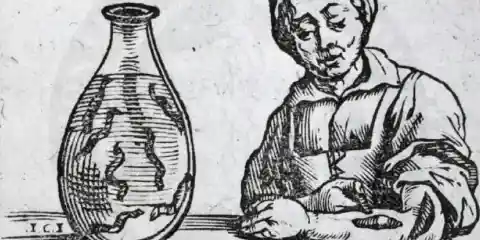
Leeches Used To Drain Blood
If you ever got sick in ancient times, people would assume it was the result of stagnant blood. In an effort to get things circulating properly once more and rid the body of illness (or even a minor cold), you’d be forced to try bloodletting with leeches. Does the thought make you sick in its own right? Don’t worry— you could always opt to have your blood drained by a dirty knife instead.


Animal Fat As Hair Gel
Sure, modern hairspray may make you cough for a few seconds, but it used to be far worse. The elegant styles found on wigs worn by Marie Antoinette and other women in that era were often held in place with animal fat. Not only did the animal fat have a strong odor, but it was also highly flammable— in a time where people relied on candles for light, no less.


Image: littlethings.com
The Nose Helmet
Before plastic surgery was all the rage, there was the “nose helmet.” If you were embarrassed by the shape of your nose, you could strap on this device in an effort to achieve a more desirable look. It’s unclear whether or not this method worked as intended, but there’s no doubt that it was the cause of some seriously painful migraines along the way.


Water Tanks With Lead
The earliest civilizations were built around water sources, and people spent many decades trying to figure out ways to store and transport that water greater distances. One early solution involved storage tanks that were lined with lead. Recipients enjoyed their access to water along with a high risk of lead poisoning.
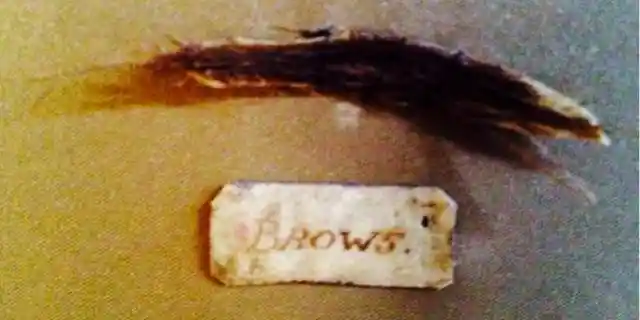
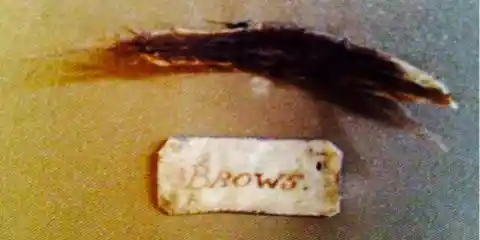
Mouse Skin Used To Shape Eyebrows
Just how far are you willing to go for flawless eyebrows? Women have long desired a perfect brow, and many women in history would carefully place mouse skin above their eyes before having their portraits drawn in order to create that perfect arch. At least the practice wasn’t as painful as waxing is today!
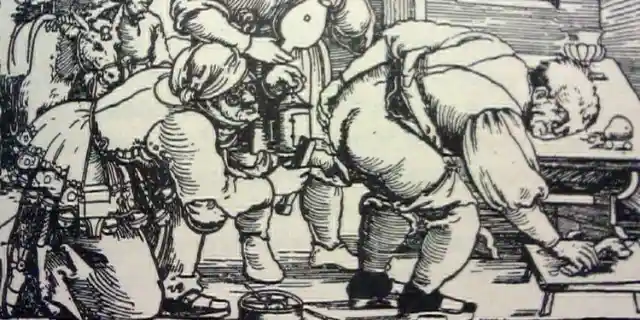
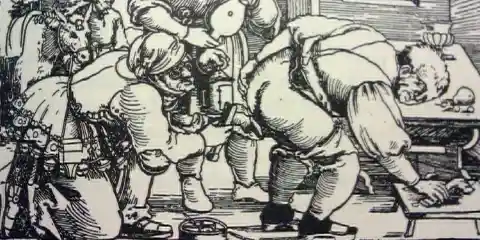
Mercury As Treatment For STDs
It’s now a widely known fact that mercury is poisonous, but it hasn’t always been that way. In fact, mercury was once used as a common treatment for STDs and other diseases. Scientists may still be looking for cures for many STDs, but they’ve certainly come a long way from prescribing mercury as a solution.


Washing Clothes In Lye And Urine
People in the past very rarely washed their clothes, but when they did, they often washed them in urine and lye. It’s hard to imagine that the concoction did much to rid the clothes of the potent funk they held after months of wear. That little tidbit is sure to give you a brand new appreciation for the clean fragrance of today’s freshly washed laundry.


Arsenic To Eliminate Body Hair
So maybe body hair waxing isn’t the most comfortable beauty treatment in the world, but it used to be far worse. In the Renaissance period, women used poisonous arsenic to get rid of unwanted body hair. Long before Photoshop created unrealistic expectations for women’s beauty, artists were painting women completely free of body hair for years. Women were left doing anything they could, including rubbing poison all over, to keep up.
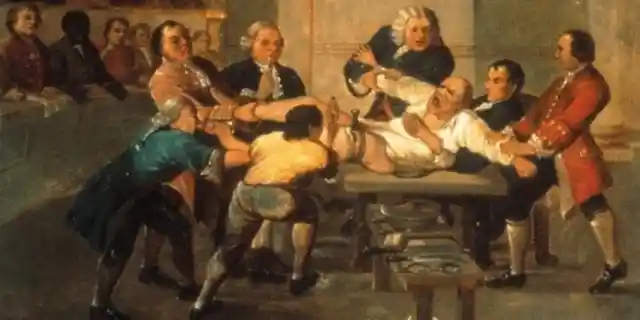

Unclean Surgical Instruments
Since urine was the go-to antiseptic of bygone eras, it only makes sense that they disinfected surgical instruments with urine as well. Even with the strict medical standards of today, surgery patients are at risk of infection. Can you imagine how much worse it was when doctors relied on urine to clean their scalpels?
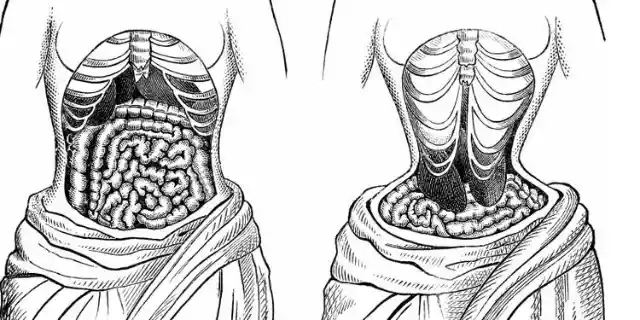
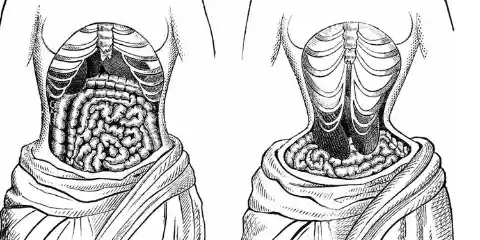
Corsets Crushed Organs
If you’re looking to get in shape and trim your waistline today, hopefully you’re doing so by eating clean and exercising regularly. In the 19th century, women turned to a simpler yet much more painful solution: corsets. The device promised to perfect a woman’s figure, but it frequently crushed their organs and displaced their ribs in the process.

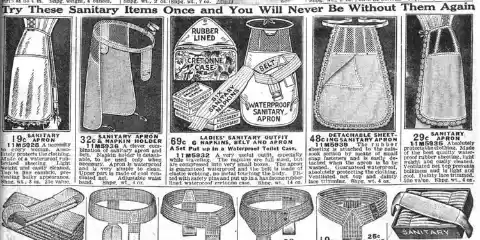
Feminine Products Made Of Napkins, Animal Skin, And Grass
Feminine product innovators are still coming up with new and improved ways to manage that time of the month (and filling your Facebook feed with their advertisements). No matter which product you choose, it’s sure to be a vast improvement over the earliest feminine products. Women in the 10th century often made pads and even tampons out of whatever they could find, including lint, moss, animal skin, and grass.


The Tapeworm Diet
Even today, there are “quick fixes” for weight loss that are far more dangerous than they are effective. In the early 1900s, the go-to magic diet involved swallowing a tapeworm. You could eat whatever you wanted, sure, but you were also at serious risk for meningitis, epilepsy, and more. The tapeworm diet is now banned in the US, but it still serves as a good reminder that a healthy diet and regular exercise are always the best way to lose weight and take care of your body.